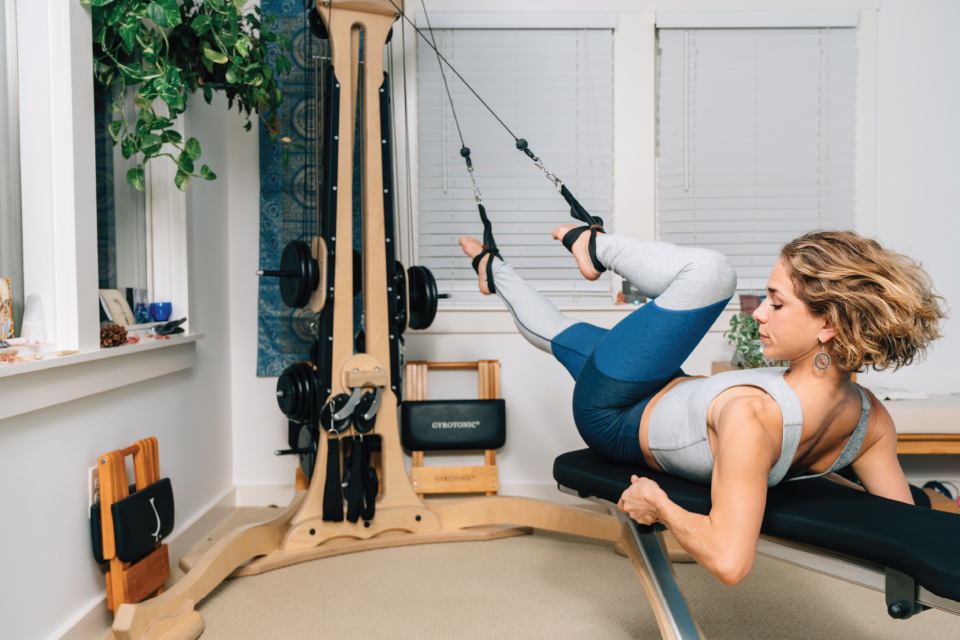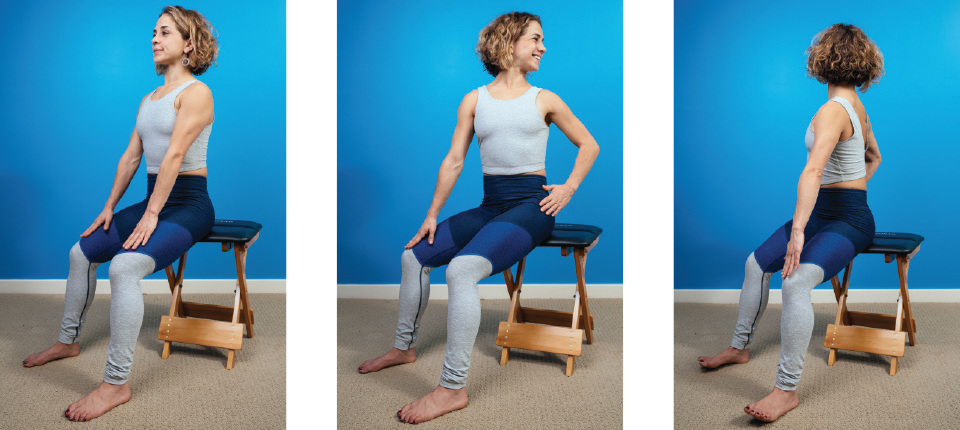Recovery Through Movement and Mindfulness

Alex maintains a healthy mind, body, and system through a disciplined movement practice. Read about her tips and the modalities she’s found most helpful in her personal recovery.
What causes most injuries in athletes?
Most injuries occur due to overtraining the body in sport-specific movement patterns without having the proper prerequisites or a holistic training program. Injuries are an unavoidable part of being an athlete. Assuming otherwise leads to a lack of preparedness in knowing how to cope and rehab the body. One of the most critical lessons learned from Functional Range Conditioning (FRC) is the importance of training your joints every day. Every joint must move with efficiency independently before implementing the joint into a global system of movement. Injuries occur because athletes can swing a baseball bat in mass repetition, run hundreds of miles, and do handstands, but cannot execute basic developmental movement patterns without compensations. When an athlete can organize the body and move the joints in the necessary ranges with neurological control, injury will lessen. If you are an athlete, take the time to go back to the basics, evaluate if your joints can get into the requisite positions to absorb and adapt to the force you are placing on it, and if not, courageously train your weakest links. And breathe!
Any tips to prevent injury and/or optimize recovery?
Move every day. To help prevent injury, have a disciplined physical practice where you prime your body to do the activities you are asking it to do and rest when you are tired. To optimize recovery, keep moving, eat mindfully, spend time outdoors, visualize yourself healing, and sleep. One of the most important additions to cultivating a daily movement practice is finding a meditation or mindfulness practice. As is our mind, so is our life. Injury and sickness are a natural part of life. When the body needs a break from strenuous activity, we do ourselves a favor by having a practice to strengthen meta-awareness and the mind. It develops our ability to relate to challenging situations with equanimity and courage. We experience this life through our bodies; therefore maintaining total body/mind well-being through healthy movement patterns and mindfulness is critical for overall happiness. Also, never give up hope whether you are training to prevent injury or recovering. We can always begin again.
What is the GYROTONIC EXPANSION SYSTEM®?
The GYROTONIC® and GYROKINESIS® methods are holistic approaches to movement that comprise the Gyrotonic Expansion System method. After facing debilitating injuries, professional dancer Juliu Horvath created these exercise methods, originally known as “Yoga for Dancers”, as a way to heal himself and regain his athletic abilities. Gyrokinesis exercises are taught on a chair and a mat on the floor, whereas Gyrotonic exercises are executed on custom-designed machines. Both methods are inspired by the spiraling patterns found in our bodies and nature. Special attention is placed on the spine and cultivating neurological coordination through isometric training and rhythmic aerobic sequences. The Gyrotonic method was uniquely created to meet the needs of all bodies and offers maximum versatility in training to cultivate strength and flexibility. The universal movement patterns found in this method are arching and curling (extension and flexion-think cat/cow in yoga asana), spirals (spinal twists), side bending (lateral flexion), circles, and the wave. These motions practiced with the corresponding breathing patterns stimulate the whole body, take the spine through every movement plane, maintain joint health, and improve coordination and balance. The Gyrotonic method is such a transformative modality for the mind and spirit because there is a major focus on mobility training, just like in FRC, stretching intelligently, and having fun. While we must remain disciplined and focused in our training, it is so important to play and feel joy when moving our bodies.
Who can benefit from Gyrotonic and Gyrokinesis exercises?
The Gyrotonic Expansion System method is used worldwide with great success by dancers such as Misty Copeland, athletes such as Andy Murray, physical therapists, people with chronic pain, illness, disabilities, and more for injury prevention, pain relief, and training enhancement. This is such a fantastic movement system because everyone, no matter age, ability, movement background, or athletic focus, can find benefit. Truly, this is a method made for everyone. I started practicing Gyrotonic and Gyrokinesis exercises in 2011 after a two-year medical leave during college to heal from cervical spine and hip surgery. After being I might not be able to dance professionally and living with debilitating chronic pain, I turned to Gyrotonic private lessons, pilates, and yoga to heal. I found great relief from these techniques and became a teacher to inspire people to cultivate a disciplined movement practice to help maintain a healthy body, mind, and spirit.
What are some exercises that anyone can do throughout the day to enhance injury prevention and recovery?
Mid-Day Spine Unwind
I like to do this circuit three times after spending too many hours at the computer! After acquainting yourself with the exercises, try to find a little flow through the movement with your breath.
Exercise 1: FRC Shoulder Circles
Sit upright or stand with feet flat on the floor. Let the fingertips extend long towards the earth, and feel the back of the neck lengthen. Check in with how your body feels.
Inhale through the nose. Exhale through the mouth, and push arms into your side body with five to 10 percent effort, while keeping abdominals engaged.
Inhale as you bring shoulders straight up toward the ears. Feel your abdominals support you as you keep arms and fingers long on the side body.
Exhale, roll both shoulders back and glide arms down the legs until your hands return to the starting position.
Repeat 10 times in each direction. For a little extra, repeat this exercise using one arm at a time.
Exercise 2: Simple Seated Twists
Sit upright on a chair with feet flat on the floor. If comfortable, place your hands on your knees.
Inhale through the nose, and feel the back of your neck lengthen towards the ceiling.
Exhale through the mouth as you twist (spiral) to the left. Let the left hand move on your leg toward your left hip.
Inhale to return to center, and repeat to the right.
With each spiral, imagine your spine getting taller.
Repeat 12 to 20 times. Never do an exercise if it causes any pain, and, most importantly, have fun!
.jpg)
.jpg)







